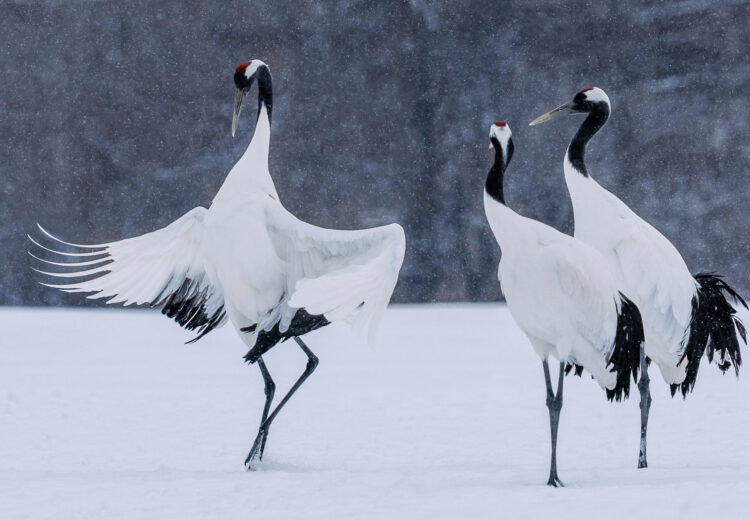Japan Photography Tours

Our Japan wildlife photography tours focus on the marvellous winter wildlife spectacles of this chain of islands off East Asia, and in particular the winter wonders of the island of Hokkaido, including its cranes dancing in the snow, huge fighting sea eagles, fish owls and swans on icy lakes.
Hokkaido is the most northerly of the four main islands of the Japanese archipelago and has the coldest winter climate, with snow often lying on the ground for two or three months. Hokkaido is undoubtedly the star attraction during our Japan wildlife photography tours, and for very good reasons. Foremost among its wildlife photography spectacles are the dancing Japanese (or Red-crowned) Cranes that visit traditional feeding stations in the countryside. Here you can get superb images at close range, or photograph the cranes in a steaming river at sunrise for a very different perspective. Further north are the lovely Whooper Swans at Lake Kussharo, which can provide opportunities for memorable images of swans among the ice or flying in to land through the falling snow. Up in the north of the island, at Rausu, is the spectacle of the huge Steller’s Sea Eagles and smaller White-tailed Eagles sitting around on the sea ice or fighting over food, while nearby the equally impressive Blakiston’s Fish Owl emerges after dark to provide yet another dream opportunity for the wildlife photographer.
Our Japan wildlife photography tours do not just include Hokkaido, for there are other photographic wonders in the Japanese islands. Foremost among these are the marvellous Japanese Macaques, commonly referred to as Snow Monkeys, that are to be found in the mountains of the main island of Honshu.
We also have an exciting optional extension before the main section of our Japan wildlife photography tours. The extension features Arasaki on the southern island of Kyushu, where thousands of Hooded Cranes and elegant White-naped Cranes spend the winter. These birds have become so tame after years of being fed by the wildlife reserve staff that they can now be approached to just a few metres distance.

